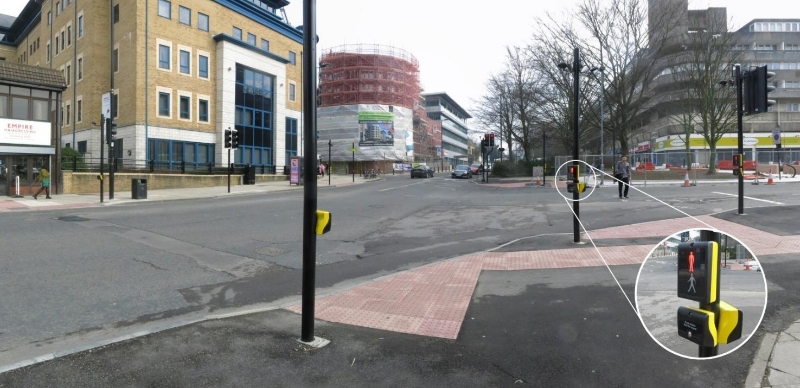Road crossings - FAQs
We often get questions about the newer style puffin and toucan crossings that are being rolled out nationally, replacing the older pelican crossings. The newer crossings have been shown to be consistently safer, so are being phased in gradually.
Where is the green man and why has it moved?
Pelican crossings have the green man above head height on the opposite side of the road. The newer puffin and toucan crossings place the green man next to you, on the side where the oncoming traffic is approaching. This way you are not only looking for the green signal to go, but are looking in the right direction to see if traffic is stopping and that it is safe to cross.

Is there more or less crossing time?
The green man on older pelican crossings comes on for a few seconds and then begins to flash. At the same time, traffic is shown a flashing amber light. Often people risk stepping out when the green man is flashing, and people with less mobility complain about vehicles edging forward.
The new puffin crossings show the green man for a similar length of time, but then return to red, to stop pedestrians who arrive too late to cross. Puffin crossings use intelligent sensors to detect when pedestrians are waiting and crossing, and can extend how long traffic is held on red. It adapts to give people time to cross safely.
The puffin and toucan crossings are also good for drivers, as the pedestrian phase is only triggered when someone presses a crossing button. The pedestrian phase is kept short when people cross quickly, and if there is nobody waiting, the pedestrian phase can be cancelled.
Puffin and toucan crossings, what is the difference?
Puffin and toucan crossings work the same way, but toucan crossings also allow for cyclists, and have both green man and green bicycle signals.
When is it ok to bleep?
All three types of controlled crossings can have beeps, to let visually impaired people know when it is safe to cross. However, bleeps are only permitted where there are no other crossing points within ear shot. A visually impaired person at a different crossing could hear the bleeps and believe it's safe to cross, when it may not be. Instead of a beep, there is a tactile cone under the crossing button that rotates when the green man appears.

